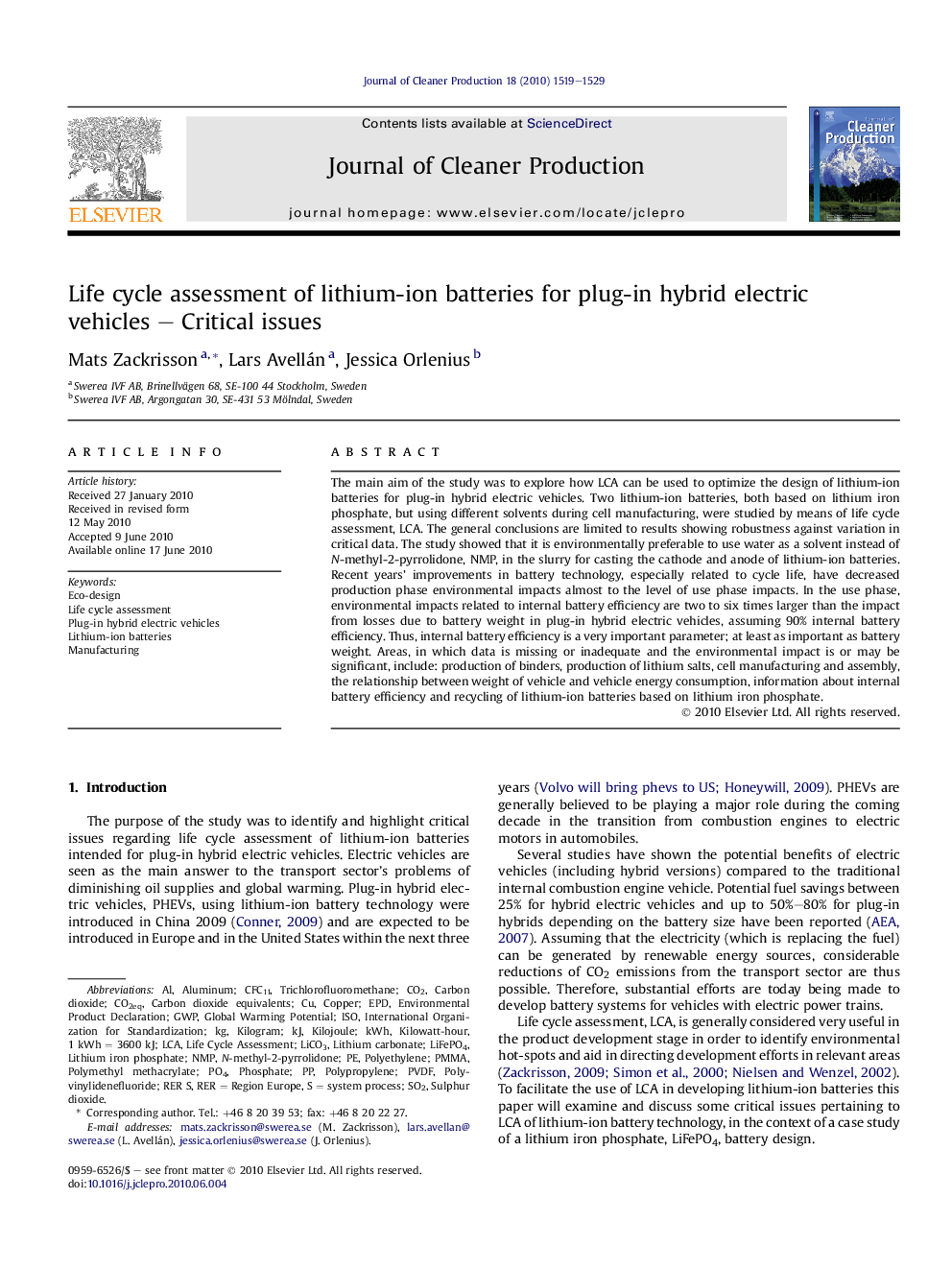| Article ID | Journal | Published Year | Pages | File Type |
|---|---|---|---|---|
| 1746378 | Journal of Cleaner Production | 2010 | 11 Pages |
Abstract
The main aim of the study was to explore how LCA can be used to optimize the design of lithium-ion batteries for plug-in hybrid electric vehicles. Two lithium-ion batteries, both based on lithium iron phosphate, but using different solvents during cell manufacturing, were studied by means of life cycle assessment, LCA. The general conclusions are limited to results showing robustness against variation in critical data. The study showed that it is environmentally preferable to use water as a solvent instead of N-methyl-2-pyrrolidone, NMP, in the slurry for casting the cathode and anode of lithium-ion batteries. Recent years' improvements in battery technology, especially related to cycle life, have decreased production phase environmental impacts almost to the level of use phase impacts. In the use phase, environmental impacts related to internal battery efficiency are two to six times larger than the impact from losses due to battery weight in plug-in hybrid electric vehicles, assuming 90% internal battery efficiency. Thus, internal battery efficiency is a very important parameter; at least as important as battery weight. Areas, in which data is missing or inadequate and the environmental impact is or may be significant, include: production of binders, production of lithium salts, cell manufacturing and assembly, the relationship between weight of vehicle and vehicle energy consumption, information about internal battery efficiency and recycling of lithium-ion batteries based on lithium iron phosphate.
Keywords
EPDCO2eqtrichlorofluoromethaneN-methyl-2-pyrrolidoneGWPNMPLiFePO4PVDFPO4AluminumLCALife Cycle Assessmentenvironmental product declarationISOlithium-ion batteriesSulphur dioxideSO2Carbon dioxideManufacturingInternational Organization for StandardizationEco-designPhosphateLithium iron phosphateCopperCarbon dioxide equivalentsPlug-in hybrid electric vehiclesglobal warming potentialPMMAPolyethylenepolymethyl methacrylatePolyvinylidenefluoridePolypropyleneCO2Lithium carbonatekWhKilojoulekilogram
Related Topics
Physical Sciences and Engineering
Energy
Renewable Energy, Sustainability and the Environment
Authors
Mats Zackrisson, Lars Avellán, Jessica Orlenius,
